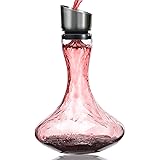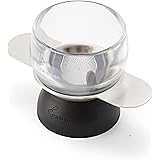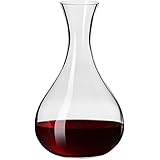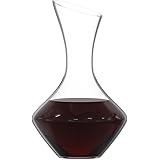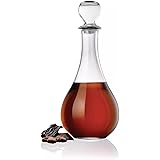The intricate world of food and wine pairing often presents a delightful challenge, particularly when navigating the vibrant and complex flavors of Asian cuisine. Traditional pairing wisdom, which often dictates “white wine with white meat and red wine with red meat,” falls considerably short when faced with the diverse flavor profiles inherent in Asian dishes. As highlighted in the insightful video above, the true secret to mastering Asian food and wine pairing lies in an entirely different approach: focusing on the sauce, not the protein. This fundamental shift acknowledges that sauces are the dominant flavor drivers, dictating the overall character and intensity of the dish.
Understanding this “sauce is king” philosophy transforms your approach to selecting the perfect wine. Asian sauces are celebrated for their layers of flavor, often combining sweet, sour, salty, spicy, and umami elements in a single mouthful. These complex matrices demand a wine that can either complement these nuances or provide a delightful counterpoint, rather than clashing or being overwhelmed. By prioritizing the sauce, culinary enthusiasts can unlock a more harmonious and truly elevated dining experience, ensuring each sip enhances the rich tapestry of flavors on the plate.
The Philosophy of Sauce-Driven Pairing in Asian Cuisine
The emphasis on the sauce in Asian culinary traditions stems from its profound impact on the dish’s flavor identity. Unlike Western cuisine where proteins often take center stage, Asian cooking frequently uses meat or vegetables as a canvas for intensely flavored marinades, glazes, and finishing sauces. These sauces are meticulously crafted from diverse ingredients such as soy, ginger, garlic, chilies, herbs, and various oils, creating a symphony of tastes and aromas. This concentration of flavor means that a wine selected to complement a mild chicken breast would utterly fail when that same chicken is coated in a pungent, spicy curry sauce.
Consider the powerful concept of umami, a cornerstone flavor in many Asian cuisines, often derived from ingredients like soy sauce, mushrooms, or fermented products. Umami can present a formidable challenge for wine pairing, as it often clashes with high tannins in red wines, leading to a metallic or bitter taste. Therefore, wines with lower tannins, higher acidity, or a touch of sweetness tend to be more forgiving and versatile partners. Recognizing the inherent characteristics of each dominant sauce profile becomes the guiding principle for successful Asian food and wine pairing, moving beyond simplistic protein-based rules.
Decoding Key Asian Sauces and Their Wine Companions
Exploring specific sauce types and their optimal wine counterparts reveals the depth of the sauce-driven pairing strategy. Each sauce presents a unique set of challenges and opportunities for the discerning wine lover. By understanding the core characteristics of popular Asian sauces, it becomes easier to select a wine that enhances the overall culinary experience, creating memorable pairings.
Sesame Oil: Aromatic Richness Meets Elegant Acidity
Sesame oil, with its distinctly nutty, toasted, and sometimes smoky aroma, plays a crucial role in many Asian dishes, from dressings and marinades to finishing touches. Its richness and fatty texture require a wine with sufficient acidity to cut through its intensity, preventing the palate from becoming fatigued. As suggested, a high-acid Pinot Noir is an exemplary choice for this profile.
Pinot Noir’s bright acidity effectively cleanses the palate, while its characteristic red berry fruits and delicate perfume beautifully complement the smoky and nutty notes of sesame oil. Wines from regions like Burgundy (France) or the Willamette Valley (USA) often exhibit these qualities, offering an elegant counterpoint to sesame oil’s robust character. This pairing beautifully balances the richness of the oil with the wine’s refreshing lift and aromatic complexity.
Wasabi & Soy: Salty Spice with Effervescent Harmony
The combination of pungent wasabi and umami-rich, salty soy sauce is iconic, particularly with sushi and sashimi. This dynamic duo demands a wine that can stand up to their intensity without being overwhelmed, while also offering a refreshing reprieve from their potent flavors. The saltiness of soy can make many wines taste flat, while wasabi’s heat requires a delicate touch.
Champagne, with its crisp acidity, fine effervescence, and often saline minerality, is a remarkable partner for this pairing. The soft, persistent bubbles cleanse the palate, offering a refreshing contrast to the spicy kick of wasabi and the umami of soy. Its inherent crispness and sometimes yeasty notes provide a sophisticated counterpoint, making it a classic choice for raw seafood preparations. Other quality sparkling wines, such as Cava or Franciacorta, can also offer similar benefits, providing that vital effervescent lift.
Hoisin: Sweet, Savory Depth and Bold Counterpoints
Hoisin sauce, a thick, dark, and wonderfully sweet-savory condiment, is a staple in Cantonese cuisine, often found in dishes like Peking duck or char siu pork. Its pronounced sweetness and rich, plummy notes require a wine with enough structure and spice to balance its intensity. A conventional dry red might be overwhelmed, or taste overly tannic against the sweetness.
Shiraz Viognier blends, particularly those where the Viognier component adds aromatic lift and softens the robust Shiraz, offer an excellent solution. The Shiraz contributes spicy, plummy, and sometimes smoky notes that echo the sauce’s depth, while its underlying structure handles the sweetness. The Viognier adds a floral, apricot nuance that complements the complexity without adding cloying sweetness, creating a harmonious and texturally pleasing match.
Satay Sauce: Nutty, Spicy Complexity and Viscous Resonance
Satay sauce, with its creamy peanut base, hint of sweetness, and subtle chili spice, presents a multi-layered profile that requires a thoughtful wine pairing. Its crunchy nuttiness and viscous texture call for a wine that can complement these textural elements while enhancing, rather than clashing with, its spice. The richness of the peanuts requires a wine with a certain weight.
Pinot Gris, particularly a more oily and viscous style common in Alsace or Oregon, is a superb choice. Its inherent body complements the creamy nuttiness of the satay, while its flavors of apple, pear, and sometimes a hint of ginger or spice, can bring out the sauce’s nuanced heat. The wine’s texture provides a satisfying mouthfeel that resonates with the sauce’s own richness, creating a wonderfully cohesive experience.
Coconut Milk: Creamy Sweetness and Unadulterated Fruit
Coconut milk is a cornerstone ingredient in many Southeast Asian curries and desserts, imparting a creamy texture and a subtle sweetness. When combined with vibrant spices, it creates a rich yet delicate foundation. Pairing with coconut milk-based dishes demands a wine that can offer a luscious mouthfeel without introducing conflicting flavors, especially bitterness from oak.
Unoaked Chardonnay emerges as an ideal partner. Its pure flavors of peach, melon, and fig, devoid of the vanilla or toast notes from oak, allow the fruit to shine, providing a refreshing counterpoint to the coconut’s sweetness and richness. The absence of oak is crucial here; oaked Chardonnays, with their higher tannins and wood-derived flavors, often create an unpleasant bitter aftertaste when paired with spicy or subtly sweet dishes. The unoaked style offers a clean, fruit-forward profile that delivers a wonderfully luscious mouthfeel, enhancing the dish’s inherent creaminess without distraction.
Beyond the Basics: Advanced Pairing Principles for Asian Cuisine
While specific sauce pairings are invaluable, a deeper understanding of general wine pairing principles elevates your Asian food and wine choices. Consider the interplay of five key components: acidity, sweetness, spice (heat), umami, and texture. Mastering these elements allows for flexible and creative pairings across the vast landscape of Asian cuisines.
For instance, high-acid wines like Riesling or Sauvignon Blanc excel at cutting through the richness of fried dishes or balancing sweet and sour preparations. Sweetness in wine, particularly in off-dry Rieslings or Gewürztraminer, can beautifully tame chili heat, offering a soothing contrast. Umami-rich dishes benefit from wines with bright acidity and minimal tannins, such as certain sparkling wines or crisp dry whites. The texture of a wine – its body and mouthfeel – should ideally complement the dish’s weight; a rich curry often calls for a wine with a similar viscosity. Embracing these advanced considerations provides a robust framework for making inspired decisions in your Asian food and wine pairing journey.
Elevating Your WOK + WINE Experience
The journey through Asian food and wine pairing is one of continuous discovery and delightful experimentation. Moving beyond outdated rules and embracing the “sauce is king” philosophy opens a world of harmonious flavors. The recommendations provided offer a solid starting point for enhancing your dining experiences, but personal preference remains paramount. Consider exploring other aromatic whites like dry or off-dry Riesling, which can be remarkably versatile with many Asian dishes due to their inherent acidity and fruit. Gewürztraminer, with its intense lychee and rose petal notes, also offers compelling pairings with spicier Thai or Indian curries.
Furthermore, don’t shy away from traditional beverages like Sake, especially junmai styles, which often possess a beautiful umami synergy with Japanese cuisine. The goal is to find a wine that balances the sauce, ensuring neither the food nor the wine overpowers the other, but rather creates a synergistic and memorable experience. Experiment with different vintages and producers to fine-tune your palate and discover your own perfect Asian food and wine pairing combinations. This exploration will undoubtedly enrich your appreciation for both the culinary artistry of Asian cuisine and the sophisticated world of wine.



